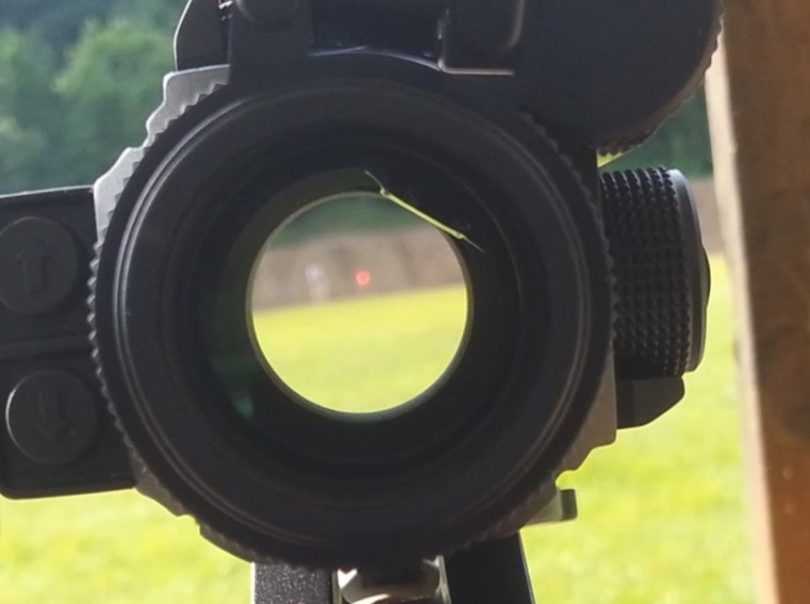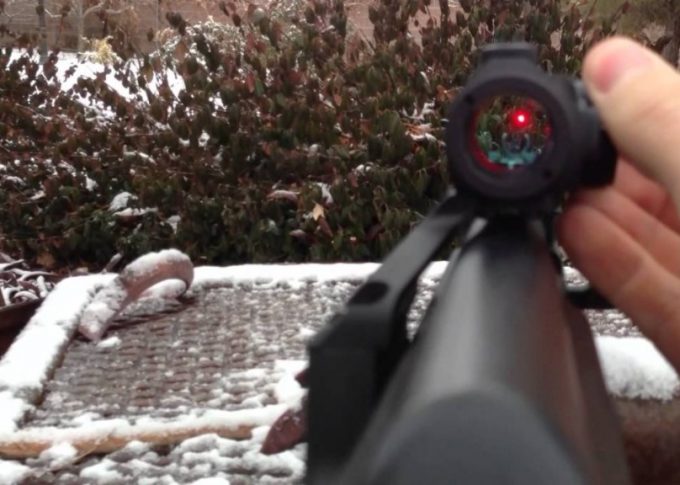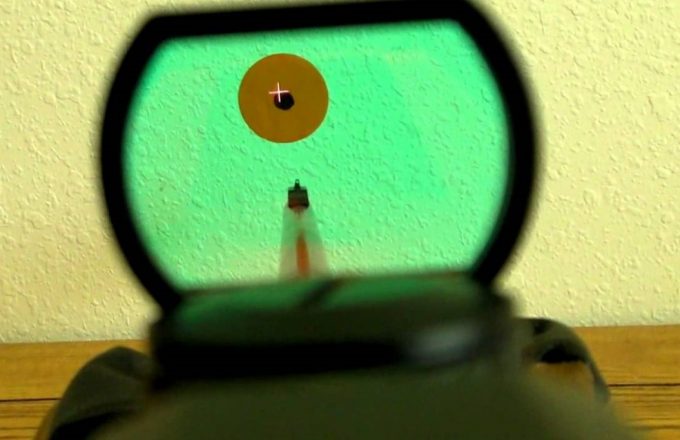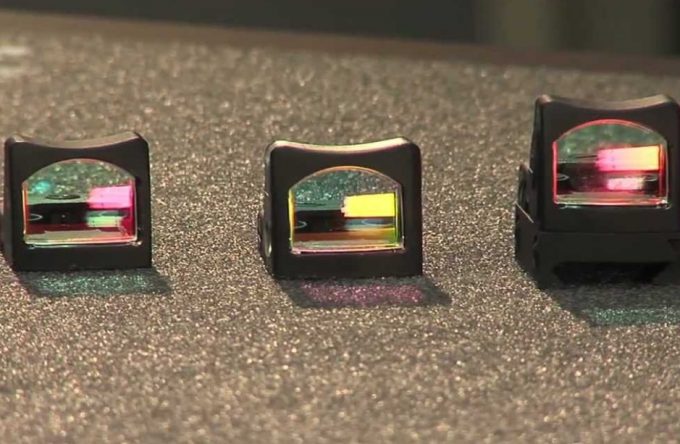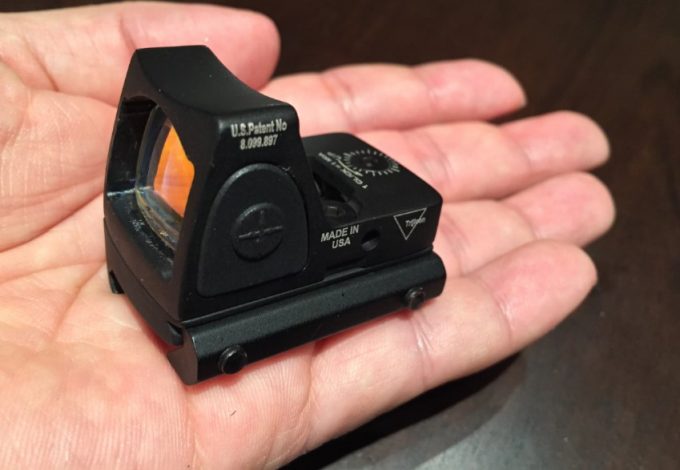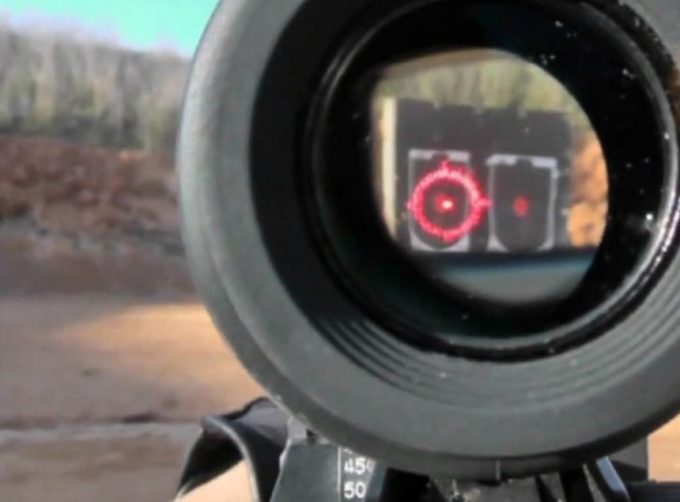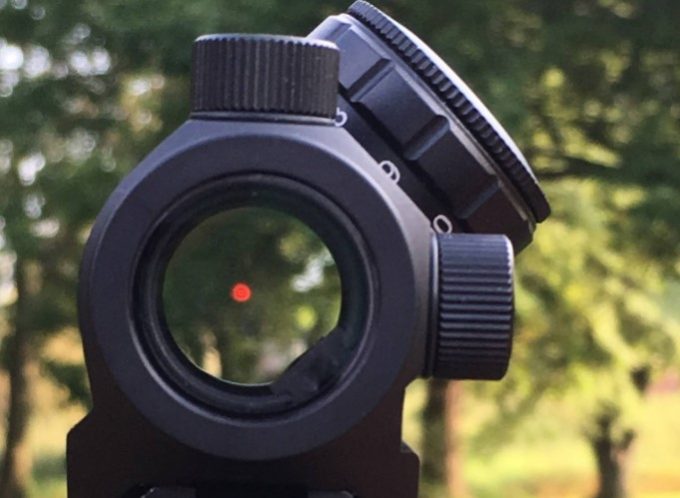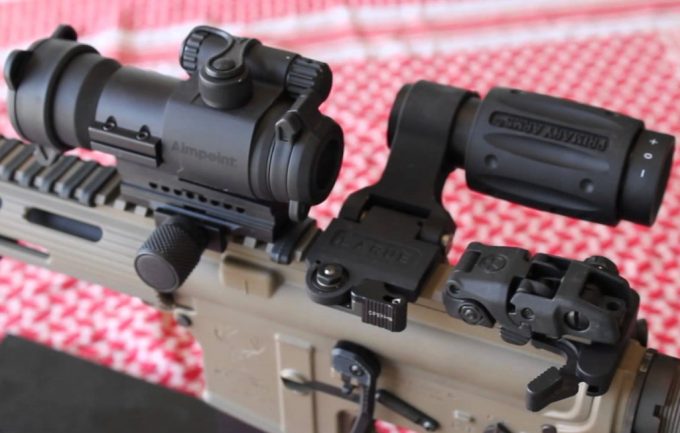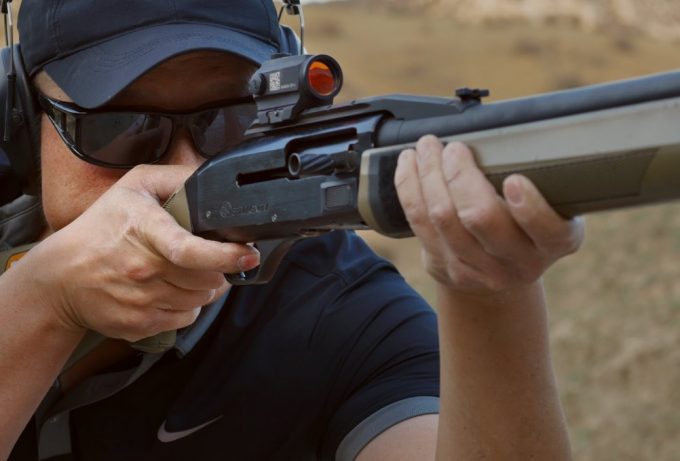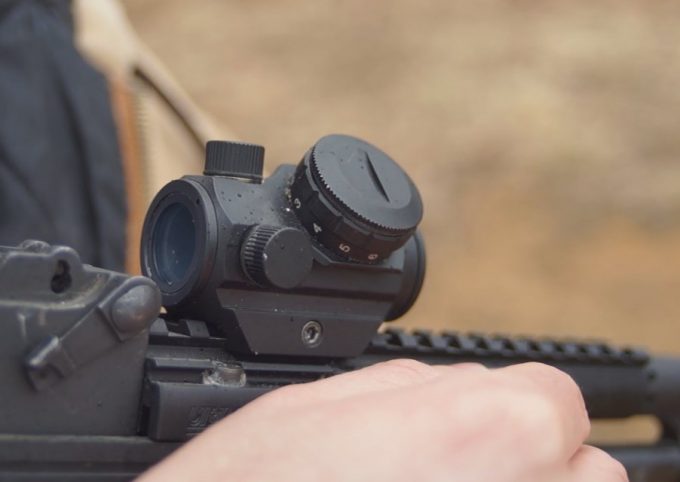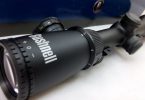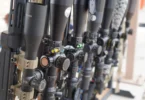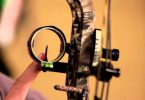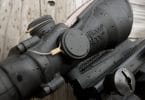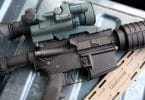Are you a shooter that mostly takes close range targets? If so, you may have already been familiar with the red dot sight, but find yourself wondering how does a red dot sight work? Or you might be new to shooting and don’t want to walk into the shop and just say I’d like one of those sights like in call of duty. Either way, you need some information about this style of sight and we are here to help.
Ideal for hunting, having the best red dot sight will make you easily find and shoot your target. This is why the military uses them as they make every soldier’s hit a perfect shot. It will surely help you be better aware of your surroundings because you can keep your both eyes open and will allow you to see your target faster.
Not only will we give you the important details on the function of these sights, but we will also give you some valuable information on the best setups to use them with. Since this is more of the 101 to red dot sights we won’t look at any specific models here, but rest assured, that information isn’t hard to track down. So, let’s answer that burning question.
What is a Red Dot Sight
To get to the point that we can discuss how this style of sight works, we first have to make sure that we are clear on what we are talking about. The truth of the matter is that the term ‘red dot sight’ merely means a type of a sight that uses a red dot as an aiming point.
You can surely see how this term is rather vague and doesn’t exactly help us to narrow things down a particular type of sight. While it would be a stretch, you could put a red sticker on your iron sights and be technically correct in calling them a red dot sight. Let’s take a closer look at three sighting solutions that could fall under the heading red dot sight.
Reflex Sight
This is generally what people think of when they toss the red dot term around. These sights tend to be round and rather short. Inside the housing, there will be a curved mirrored lens that the shooter will look through.
On this lens, an LED will be used to illuminate a single dot (most often red, but there are other color options available now). This dot is projected back to the shooter’s eye so that other people will not see it and not be able to see exactly where the weapon is aimed.
Holographic Sight
Another red dot option is a little bit newer. As it is related to the reflex sight, the holographic sights are generally short, but, since they don’t require the curved mirror, it is easier to make them in other shapes. This system uses a laser diode to illuminate a special film between two layers of glass.
That film will produce a holographic reticle that the shooter is able to see for aiming. Again, only the shooter will be able to see precisely where the weapon is aimed. However, with this set up any reticle design that the manufacturer chooses can be made, so you aren’t limited to a single dot.
Laser Sight
The final aiming solution that we will look at under the red dot heading is the laser sight. This is simply a laser that is attached to the weapon. When turned on, it will shine a dot on the spot the weapon is aimed at. This type of solution will show everyone with a view of the target exactly where the weapon is aimed.
Another drawback of this solution is that on sunny days or a slightly farther distance you can’t always get a good view of where you are aiming. For these reasons, we will be leaving the laser sight, out of further discussions for this article.
How Does it Work?
Now that we have a good idea of our options, let’s get into the nuts and bolts. We will take a look at the workings of both the reflex and the holographic sight.
LED
You’ll find an LED at the heart of any reflex-styled sight. It will generally be located very low against the mounting plate of the sight. The other major component that you will need is a screen that has a curved mirror.
When energized the LED shines a light at the mirror, which has two major features that let it function the way that is needed. First, it is slightly tilted so that anything reflected in the mirror will go back to the shooter’s face. Secondly, the mirror is coated to reflect red light and allow all other wavelengths of light to pass through.
As the light from the LED hits the mirror it bounces back to the shooter’s eye. Once the shooter has zeroed in his or her sight the red dot will remain on the aiming point. The system has been engineered for simplicity. A simple red dot doesn’t require any additional lenses or focusing to appear crisp and clean.
Laser Diode
If you are working with a holographic sight you move from an LED to a laser diode. While you gain the option to use any reticle instead of limiting yourself to a single dot, you have to add in the extra components to make it look crisp for the shooter. These sights will generally be much more expensive due to all of the extra pieces.
Here, the shooter will be looking through a set of lenses down the barrel of their weapon. While it will look like a single lens there is actually a sandwich. The front and the back will be normal glass, but in the middle, you will have a piece with the holographic image of the chosen reticle. When powered off, you won’t see it.
When the system is powered on, your laser diode will emit light that will first be reflected by a mirror. The light will then hit a collimating reflector, normally positioned behind the lenses and on the roof of the sight.
This both reflects the light and helps to ensure that the light travels in straight lines, evenly spaced instead of spreading out, which can help focus the light. The light will be bounced once more, this time on the holographic grating. From there it will pass through the lens to the shooter, who will see their reticle.
Red Dot vs Traditional Scope
Now that we have gone over how these styles of scope work, it might be helpful to compare them to a traditional scope to better understand them. A traditional rifle scope will use a series of prisms and lenses. This setup will magnify the image, help to focus it and ensure it is properly aligned for the shooter to see.
Magnification
When compared to the red dot style the most immediate difference that is noticed is the extra lenses and prisms. Since these do not appear in red dot sights they normally offer magnification. This limits your shooting to shooter ranged, but it also means that there is less weight you are carrying around.
If you still need the ability to shoot a bit further out there are some options for reticle-less sights that can be used in conjunction with a red dot sight.
Eye Relief and Exit Pupil
The next set of differences relates to eye relief and exit pupil. Because of the series of lenses used in a traditional scope, there is a set “picture” size coming out of the shooter end of the scope, this is known as the exit pupil. At a very basic level, this needs to roughly match the size of your pupil so you can see the whole sight picture.
Eye relief is the distance from the scope that you need to be to get the clearest picture. In a perfect world, the exit pupil of a scope will be just right for the correct eye relief. Even if this happens, it means that there is one perfect spot to have your eye to use the scope.
In contrast, red dot sights have no eye relief and no exit pupil. Because of the way they are set up, once they are sighted in if you see the dot or reticle that is where you will shoot.
This means that it is easier to keep both eyes open and you can mount your sight anywhere along the barrel of your weapon. The other great point to this is that you can have your head in any number of positions and still get a clear sight picture before you shoot.
Where to Mount Your Sight
Now that you have a good idea of how they work and how they stack up against a traditional scope, you might be wondering where you should mount your sight. As we mentioned above since you are not constrained by eye relief and exit pupil you can mount your red dot style sight anywhere along the top of your barrel.
Some people prefer to have it closer to them while others like it closer to the muzzle. One thing you will want to consider when it comes time to mount your red dot sight is where or not to co-witness it to your iron sights. This is a setup where your iron sights are viewable and still able to be used to aim your weapon.
The red dot sight would sit low enough that it doesn’t block the iron sights. Many people like to go with this setup as it gives them a backup, in the case something happens to their red dot they are able to sight off the iron sights without changing or removing anything.
What to Mount Your Sight On
Naturally, now that you know how the sight works to give you an aiming aid, your thoughts will move to how does this work with my shooting. Before we get into thoughts on what type of firearms to pair this style of sight with, we should consider what they are good at and what they don’t do very well.
We’ll start off with their shortcomings. The main one for this style of sight is that it is not magnified. This means that you probably won’t be grabbing this for your long-range shots which may rule out a chunk of hunting. Another possible issue with a red dot might come from your eyes.
If you have problems seeing certain colors your eyes might not pick up the red aiming point, particularly in bright sunlight, rending the sight useless. Lastly, this is an electronic item. While they don’t draw much power and a battery should last you at least one season, there is the possibility of a failure of the electronics which could leave your sight non-functional.
To counter these, let’s look at the strengths. Due to the open nature of the sight and lack of eye relief and exit pupil restrictions you can get a good look at your sight from a range of positions. This means that target acquisition is much quicker.
This sight style is also easily used with both eyes open, which can aid in a better idea of what is happening around your target. Lastly, due to the lower power needs, you should be more than covered if you put a fresh battery in your sight yearly.
Top Firearm Choices
With that in mind, let’s get to the guns! While we aren’t looking for a long range hunting rifle we are looking for something that would be used for shooting at shorter ranges, perhaps with multiple targets, or to be used while moving through an area.
With those needs, a natural choice is to pair your red dot sighting system with something in the AR family. It is no wonder you often see one of these rifles with a red dot mounted on top, for civilians looking for home defense or quick target competitions for military and law enforcement usage.
Additionally, there are a number of red dot systems that are scaled down a bit and designed to be paired with handguns. This is another amazing combination, as you can quickly bring up your weapon, get a good idea of your sight picture while still maintaining observation of the area around the target.
Debating Terms
Of course, there will be debates, some might say that since holographic sights aren’t limited to a single dot they should be left in a different category. Others will claim that you should include prismatic sights. They are similar to traditional scopes but have an etched reticle on the glass that can be illuminated.
But, as you may know, if you ask an option of 10 shooters you are likely to get 12 different answers. To murky the waters, even more, there are now “red dot” sights that come with green dots. You will have to answer the question of if you have a holographic sight with a green reticle do you keep using the red dot term or go with something else.
Parting Shots
After all of that, you should have a good idea of how this style of electronic sight works and some of the various choices you have. In general, the term red dot tends to be a rather vague descriptor of a class of electronic sights. They usually have an illuminated reticle, often in red.
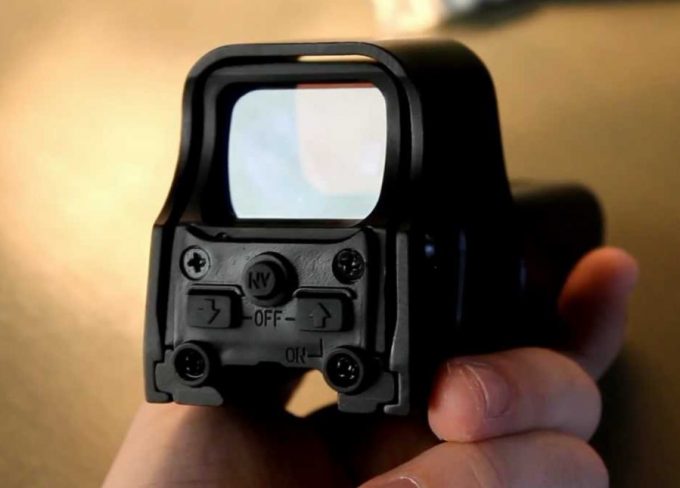
The style of sight has gained popularity both for its military use and for looking cool in games like Call of Duty. When you set out looking for your next sight you now understand just how this sight works and some of its pros and cons. Should it be the next purchase you make for your shooting? Only you can answer that question, but now you can do so armed with the right knowledge.
Finally, we’d love to hear from you. Are there some important tidbits that you feel we missed or areas that were glossed over? If so, please let us know in the comment section below.


